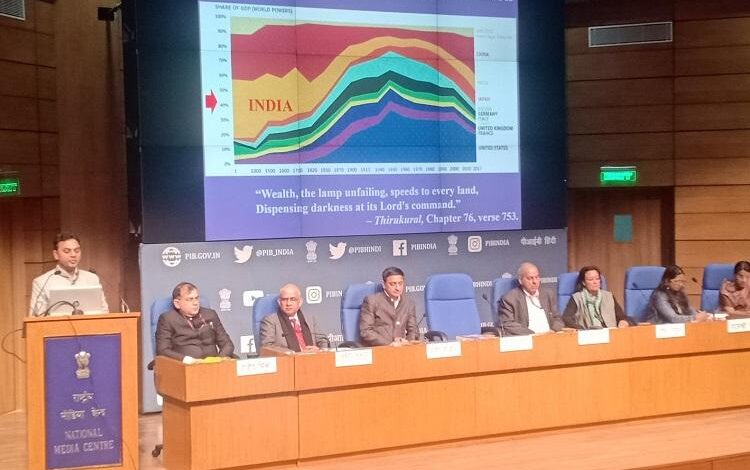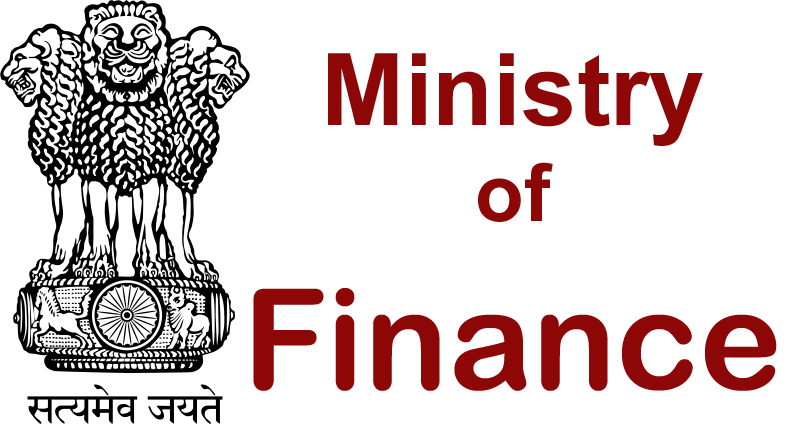Finance Ministry says the Indian economy will grow 8-8.5% this year

Finance Ministry says the Indian economy will grow 8-8.5% this year
In its Economic Survey, the Finance Ministry predicted that India’s economy would meet its targets. For this fiscal year’s first quarter, high-frequency indicators are used.
Economic Survey projected growth of 8.0-8.5% in real GDP during 2022-23.
Pankaj Chaudhary, Minister of State for Finance, said in a written reply to Rajya Sabha that since then, several High-Frequency Indicators (HFIs) have shown sustained growth momentum.
Indian real GDP growth in 2022-23 is predicted to be 8.2% by the IMF in April 2022.
Several measures have been taken by the government to maintain growth, Chaudhary said.
Fuels such as petrol, diesel, and aviation turbine fuel will be subject to a reduction in excise duty.

Chaudhary added that the RBI’s decision to hike the repo rate by 50 basis points in June was intended to reign in inflation and keep indicators on track.
According to high-frequency indicators, the economy’s first quarter growth is expected to be 8-8.5%, the finance ministry announced on Tuesday. According to the Economic Survey, the real GDP is expected to grow between 8.0 and 8.5% during the period 2022-23.
According to Pankaj Chaudhary, in a written reply to Rajya Sabha, several High-Frequency Indicators have shown sustained growth momentum since then, confirming the projected growth path for FY 2022-23.
The IMF also projected India’s real GDP growth in 2022-23 to be 8.2%, according to its April 2022 World Economic Outlook.
Many steps have been taken by the government to prevent foreign inflation from affecting growth momentum, he said.
There will be reductions in excise duty on petroleum, diesel, and aviation turbine fuel and new excise duties and cess on exports of petroleum, diesel, and aviation turbine fuel, he said, which are likely to alleviate inflationary pressures.
He noted that RBI also raised the repo rate by 50 basis points in its June Monetary Policy Committee meeting as a measure of reining in inflation.
According to him, the Russian-Ukraine war has impacted the Indian economy by disrupting global supplies and causing steep increases in crude oil, gas, edible oils, and fertilizer prices.
Despite the global price movements, the government is closely monitoring their impact on the Indian economy.
In recent weeks, oil and metal prices, as well as the price of edible oils, have stabilized. The US Federal Reserve, among others, has tightened its monetary policy to combat inflation as well. A close eye is being kept on the situation by the RBI and government, and measures will be taken if necessary.
His next reply stated that the Gross Domestic Product (GDP) for 2021-22 was Rs 2,36,64,637 crore according to provisional estimates.

In 2021-22, India’s GDP at current prices will be USD 3.2 trillion using the implied exchange rate from the World Economic Outlook (WEO) of April 2022.
A real economic growth rate of 8.7% was recorded for 2021-22, while the central government’s fiscal deficit of 6.7% constituted the country’s 7.5% of GDP during the same period.
During last year’s financial year 2021-22, the central government’s public debt was projected to be 52% of GDP according to the quarterly report on debt management.
In addition to increasing government spending to protect the lives and livelihoods of the people from adverse effects of the pandemic, the government’s revenue shortfall during 2020-21 contributed to the increase in debt.
According to him, CAD depends on imports, exports, and crude oil prices, among other things, to determine the size of the deficit.
CAD is being closely monitored by the government, and customs duties on gold have recently increased from 10.75% to 15%.
Is India going to be a victim of economic slowdown in two-three years? Know how true this doubt can be
From our neighboring countries to the world’s largest economies, there is turmoil these days. Fears of a recession are deepening. America is battling with the highest inflation rate in the US in 4 decades. The figures show signs of a slowdown in the Chinese economy. Inflation is at its peak in the countries of Europe. The economy of the neighboring country Sri Lanka has been devastated.
Pakistan is pleading for a loan from the IMF. Every day new things are being said about the global recession. In such a situation, many people in India have started making claims of an economic slowdown in the next two-three years. In particular, many leaders of the opposition have started expressing the fear of recession in the coming times. So will we see a recession like 2008 again? Is this an alarm bell for India too? Let’s know.
Global conditions are not right
In the last few years, there have been many such situations in the world, due to which many countries of the world are standing on the verge of recession. The global supply chain was affected due to the first US-China trade war. After that, the corona epidemic completely gripped the economic activities. Economies around the world were badly affected by the imposition of lockdown. Countries had to spend huge amounts of money in the name of economic packages.
Then the economies were just beginning to recover when Russia attacked Ukraine. The global supply chain was badly affected due to this heavy geopolitical tension. Commodity inflation reached its peak and the stock market started falling. Now to control inflation, central banks around the world are continuously increasing interest rates, which has made loans very expensive. The result of all these circumstances is that now the world is standing on the verge of recession.
When does recession come
A recession is a long period of decline in the economy. When the economy is at its peak, it starts and when the economy reaches the bottom level, it stops. When the economy starts to shrink for several consecutive quarters, it is said to be in recession. The important data to show a recession is the GDP growth rate.
In a recession, unemployment rises, stock markets fall, and wages drop. It is generally believed that when GDP growth starts declining in an economy for two consecutive quarters, then that economy is technically said to be in recession. Many experts are saying that the US may enter recession from the fourth quarter of this year. After that, countries like the European Union, Japan, and South Korea will also be in the grip of recession.

Less trouble for India
India’s economy has been growing at the fastest pace in the world for a long time. The young population here is a boon for India. The Indian economy has slowly come out from the effects of the Corona pandemic. At the same time, many experts say that recession in developed countries can be beneficial for the Indian economy. According to Samiran Chakraborty, India’s head of economics at Citigroup, global commodity prices will soften when the world’s major economies slow down. The direct effect of falling commodity prices will be that inflation in India will come down. In this way, the coming recession in the big countries of the world like America can help Indians get rid of inflation.
Inflation will come down in the coming time
The big issue for India right now is inflation. But in the past few years, the prices of metals, edible oil, and crude oil have fallen significantly globally. The effect is being seen in the country as well. Metal prices have declined. The retail price of edible oil has come down. The effect of reducing taxes on petrol and diesel by the government has also been seen. The best part from India’s point of view is that the global crude oil prices have come down drastically.
India imports most of its oil requirements. The global price of crude oil has come close to $100 per barrel. Due to this, the prices of petrol and diesel are likely to come down in the coming time. This will also reduce the prices of other commodities. According to the data, wholesale inflation in June was at a three-month low. It came down to 15.18%. At the same time, retail inflation had also come down to 7.01% in June.
Good growth forecast for GDP growth
Many economists say that the Indian economy is expected to grow at a rate of 14-15% in the first quarter of the current financial year. GDP figures for the first quarter are due on August 31. In a survey of 10 economists, the average GDP estimate for the first quarter was 14.43%. Also, the GDP growth for the financial year 2023 was estimated at 7.2 to 7.6%.
Let us inform you that RBI has given a growth rate of 16.2% for the first quarter and 7.2% for the full financial year. There is also good growth in the industrial production of the country. According to the data, the country’s industrial production (IIP) grew by 19.6% in May. All these figures show that even if the big countries of the world find themselves on the verge of recession, there are no signs of any major trouble for India.
edited and proofread by nikita sharma




